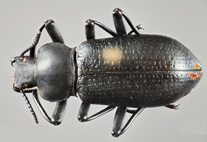Abstract
Cave-associated beetles of the subfamily Pselaphinae (Coleoptera: Staphylinidae) comprise some 170 species all over the world (Poggi et al. 1998 and subsequent papers), with Europe and North America having the highest species diversity (Besuchet 1985; Chandler 1992; Chandler & Reddell 2001; Hlaváč et al. 2006, 2008). The Asian fauna began to draw an increased attention after 2010 (Yin et al. 2011a, 2011b, 2015; Nomura 2012; Yin & Li 2015), with the number of the species growing from 10 to 25. Most of these species were found in southern to southwestern China and Japan, where many caves are scattered in the karst areas. However no species has been so far known from the Himalayan region. Most species of cavernicolous pselaphines belong to the tribes Batrisini, Amauropini, and Bythinini, while members are relatively rare in other tribes. Currently, the pselaphite tribe Tmesiphorini has no true troglobitic/cavernicolous species; all of the few existing records indicated that occurrence of some species of the genera Dacnotillus Raffray, Tmesiphorus LeConte, and Tmesiphorites Jeannel at the entrance or inside of caves or sinkholes are probably accidental, because there are no obvious morphological adaptions for cavernicolous life, and some species (e.g., Tmesiphorus costalis LeConte) are widely distributed, being found also in leaf litters, under bark, and with ants (Raffray et al. 1892; Chandler 1992; Jeannel 1953).

